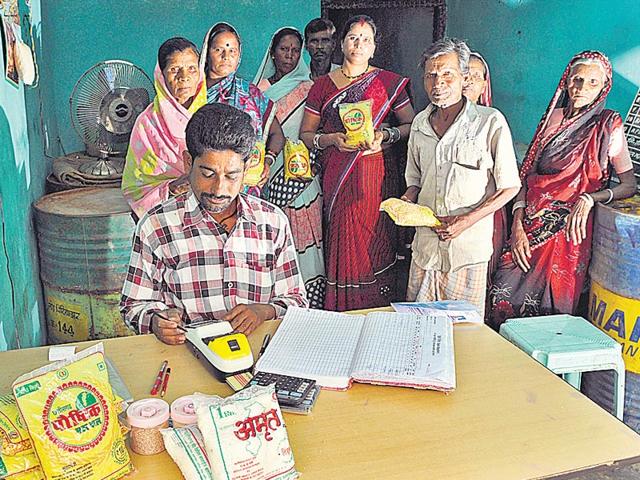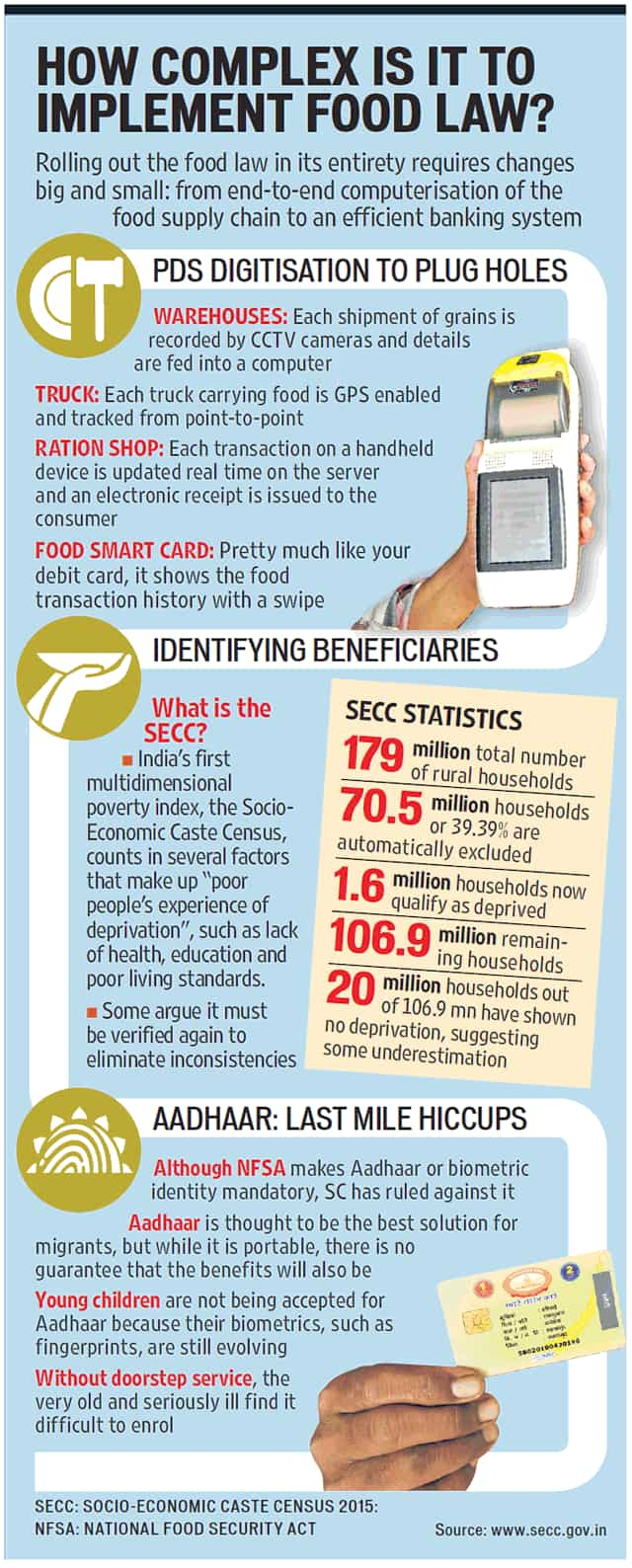Floundering hunger fight: Food law trips on power cuts, bad maths
In the fight against hunger, small glitches act as big hurdles. From frequent internet outages and missing smart cards to non-functional helplines, several factors have compounded the issue of food security in India.
In the fight against hunger, small glitches act as big hurdles. From frequent internet outages and missing smart cards to non-functional helplines, several factors have compounded the issue of food security in India.

From page 1 Thirty-five-old Senehi Phukan, a widow from Assam’s Sissiborgaon hamlet in Dhemaji district, frets over new poverty indices that could snap her lifeline: 20 kg of subsidised grains under the National Food Security Act.
Phukan’s family of three children figured under the official poverty line, until now. The Socio-Economic Caste Census (SECC) released earlier this month -- a landmark survey meant to end a heated debate over how to count India’s poor -- has enumerated the Phukan household differently.
With her oldest son turning 18, hers is no longer one of the country’s 20 million “women-headed households” that enjoy special sops. Her under-construction pucca (concrete) house, allotted under a government scheme, meant she fulfilled another criterion that could now leave her out of food entitlements.
According to the UN Food and Agricultural Organisation’s 2015 World Hunger Report, India is still home to the second-highest estimated number of undernourished people in the world. Yet, the National Food Security Act 2013 is largely unimplemented.
Counting the poor
The Modi government has shown new resolve to rightly direct subsidised benefits to the poorest by plugging leakages and throwing out undeserving people. “What we are looking at are objective factors as a proxy, ones that should have a clear relationship to income to count the poor,” said Harsh Mander, a right-to-food campaigner.
By a wide reckoning, the SECC is India’s best methodology yet to do that since it is the country’s first multidimensional poverty index that accounts for lack of health, education and living standards etc.
Yet, provisional SECC data showed that of a total 179 million rural households, a sizeable 39.39% (or 70.5 million people) have got automatically excluded on the basis of their assets or income. On the other hand, just 1.6 million people or 0.9% got automatically included as deprived. Of the remaining 106.9 million households, 20 million did not report any deprivation.
“This does hint the deprivations were very narrowly defined. Twenty million households who, despite not having sufficient income or assets to fit into the excluded category, would not be entitled to government benefits,” says NC Saxena, a former bureaucrat who devised the original parameters for the SECC.
Odisha has avoided the SECC data to opt for mixed criteria, partly based on the SECC. The state now faces a baffling situation. “We have 6.5 million excess people who have qualified and we have to now find a way to accommodate them,” Madhusudan Padhi, secretary, food supplies, said on the phone from Bhubaneswar.
Cash or kind?
The Food Security Act provides for an eventual shift to cash transfers, which is a more efficient way to deliver benefits, since currently between 30-40% of cheap grains are siphoned off. Scandinavian economist P Svedberg has estimated that to deliver Re 1 worth of food using the godown-to-ration shop route, the government has to spend Rs 9. However, several states such as Odisha and West Bengal, have told the Centre they are against switching to cash due to ideological reasons.
Digital divide
While most big airports in India flaunt free Wi-Fi, poorer towns have frequent internet outages, a digital divide hampering speedy digitisation of the food supply chains (see graphic). “Power cuts and poor internet are two big connectivity hurdles,” Padhi says.
This means without reliable internet connectivity, testing of transactions in online-enabled ration shops cannot happen in real time, said Jupen Gonsalves, the proprietor of Internet leased line vendor, Speedline.
According to a UN Broadband Commission for Digital Development report, countries like India could boost economic growth by 1.4 percentage point with every 10% rise in broadband use.
Cagey about implementing the food security law in one go, poorer states like Jharkhand sought the Centre’s permission for a partial roll-out. “That would have given us confidence. The Centre did not agree. We hope to now meet the October deadline,” said Alok Trivedi, the deputy secretary of Jharkhand’s food department.
Even in high-income states, hiccups abound. In Delhi, for instance, point of sale devices, or swipe machines, landed at rations shops on time but the smart cards are missing, says Vimla of Mahila Paraghti Sansthan, who goes by one name. Food helplines are mostly useless, says Aarti Chawla. “They have no solution for my missing smart card,” she says.
Small glitches but critical nonetheless.

Read:
Get Current Updates on India News, Lok Sabha Election 2024 live, Elections 2024, Election 2024 Date along with Latest News and Top Headlines from India and around the world.




